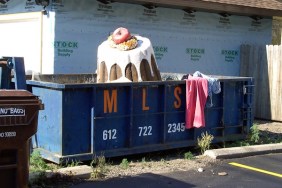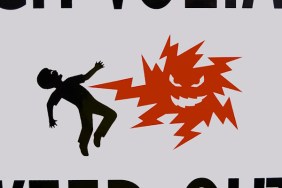CIDORI Installation, Milan, Italy
Before he turned it into an entire building, Kuma experimented with the Cidori technique (Cidori translates as '1,000 birds') in the form of a temporary installation at Milano Salone 2007. The idea is that this wooden structure is light and airy in appearance, mimicking the effect of a flock of birds flying through the sky rather than a solid monolithic building.
Shun*Shoku Lounge, Tokyo
Layers of plywood are used in the most unexpected way at the Shun*Shoku Lounge in Tokyo. Kuma created a sweeping multi-level interior packed with built-in furniture using nothing but stacked plywood, including shelves, stairs, desks and tables.
Cafe Kureon, Toyama, Japan
This structure almost resembles a log cabin that was received in a kit and assembled entirely wrong – except the effect is actually far more interesting. Cafe Kureon's defining feature is clearly the stacked timber envelope that sits over the glass separating the interior from the exterior.
Nagoaka City Hall, Japan
Another unconventional use of wood sees it assembled into a sort of checkerboard pattern in the interior of Nagoaka City Hall in Japan. These structures aren't just for show: they create shapes of light and shadow throughout the space, reflected by panes of glass.
Kayanoya Shop, Tokyo, Japan
Wooden barrels used in the production process of soy sauce are a fitting addition to the ceiling of the Kayanoya Shop in Tokyo, a retail storefront for a soy sauce manufacturer. The cedar wood used for the barrels and trays was produced by craftspeople native to the region. The barrels are not just reclaimed, they also make for a striking design feature that makes a strong statement about the company's history and traditional manufacturing process.
Yunnan Sales Center, China
The not-yet-built Yunnan Sales Center in China features a very Kuma-like facade of latticed wood, which utilizes contemporary aesthetics while echoing the shapes of Chinese vernacular architecture.






